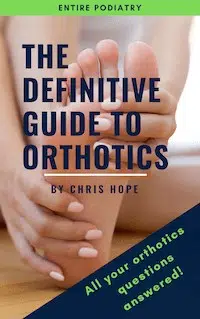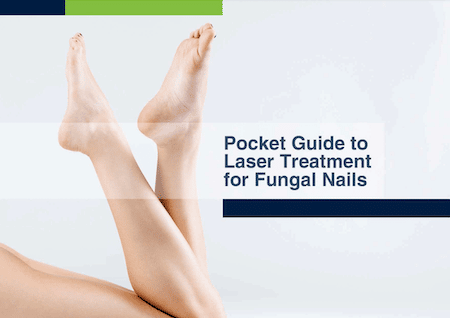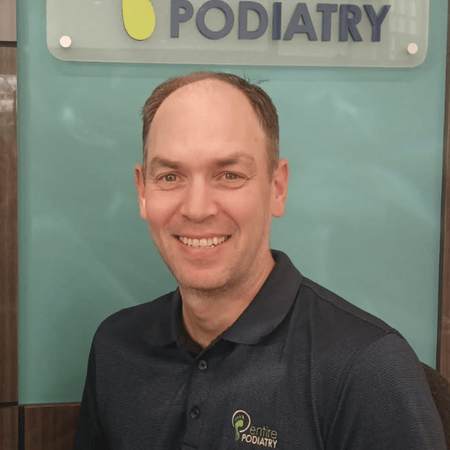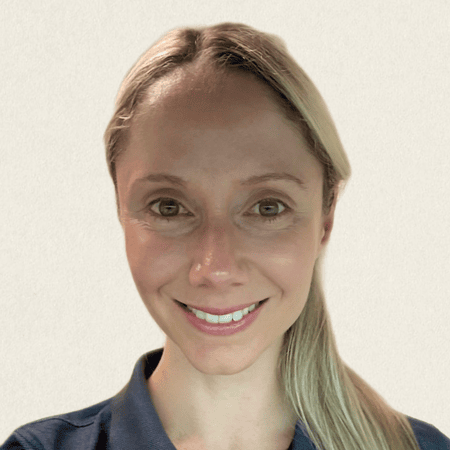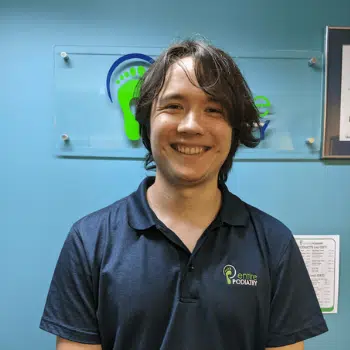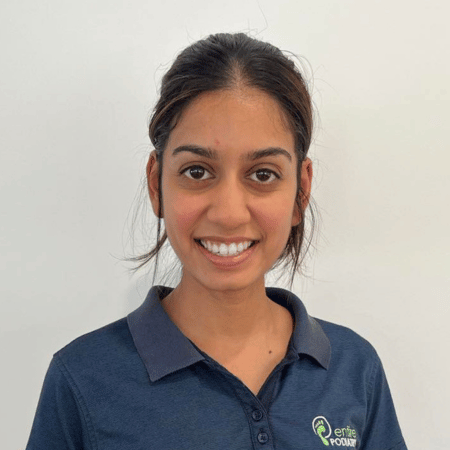Ingrown toenails are a common condition that we treat in children. Some causes of ingrown toenails in children and adolescents include:
- An inherited tendency for the nails to curve, which predisposes the nails to ingrowing
- Factors such as tight shoes, tight socks, and incorrect nail cutting technique can contribute to ingrown toenails
- A tendency to pick at the nails, allowing them to become too short, can also increase the chance of a toenail becoming ingrown.
- Some medications (such as acne medication like Roaccutane), can increase the risk of ingrown toenails due to skin sensitivity and fragility associated with this medication, making the skin more prone to trauma.
Many children may not tell their parents about their ingrown toenail, however it can become very painful and can even lead to serious infections if not treated.
Baby ingrown toenail
Newborn babies and young infants may develop ingrown toenails. You may notice the skin around your baby’s nail is red and swollen and the toe may be tender. If the nail has become infected there may also be some white or yellow discharge from the nail.
At Entire Podiatry we are very conservative and careful when it comes to the treatment of ingrown toenails in babies and young infants. Ingrown toenails may develop for a number of different reasons and the best cause of action will depend on your baby’s individual presentation. After assessing your baby’s nails our podiatrists will provide you with advice on the best way to resolve the problem.
How to treat an ingrown toenail on a baby
As newborn baby’s nails are very soft and pliable often the ingrown nail can be treated by simply cleansing the area and gently lifting the nail. We recommend soaking your baby’s foot in warm soapy water for up to ten minutes two or three times a day. This cleanses the area and increases the flexibility of the nail. Once the nail is soft, clean and flexible you may be able to gently lift the nail away from the skin at the side of the toe.
It may also be helpful to place a small amount of sterile cotton wool or gauze in between the nail and the skin to separate it. This gauze should be replaced at least twice a day. If it looks like the toe has become infected then applying a small amount of a topical antiseptic after cleansing will help resolve this infection. If the infection looks to be worsening or the redness has spread past the toe we recommend you take your baby to the doctors to have this infection managed.
When the toenail is sore and ingrown it is best to avoid tight socks or shoes which may aggravate the toe and push the nail back into the skin.
Following this advice for a few days often resolves the baby’s ingrown toenail.
How to fix an ingrown toenail on a newborn baby
If the ingrown nail remains for longer than a few days then the podiatrist may need to gently and carefully trim down the side of the nail with specialised tools to resolve the issue. We strongly recommend that you do not try cut or dig at the ingrown nail yourself as this can lead to infection and may worsen the severity of the ingrown nail.
We understand it can be daunting to see a painful ingrown nail on your baby. This is why at Entire Podiatry we are always happy to speak to you to address any questions or concerns you may have before bringing your little one in for their appointment. Feel free to contact us on 1800-4-ENTIRE with any questions you may have. Our reception team are available Mon-Fri 8:30am-5pm. If you leave a message outside our opening hours or make an online enquiry we will ensure we make contact as soon as possible.

Toddler ingrown toenail
The signs of an ingrown toenail in a toddler will usually be the same as what we see in older children and adults. The toe may be red, swollen and tender and if the nail is infected there may be discharge from the side of the nail or a fluid-filled blister may be present.
Ingrown toenails may develop in toddlers for a number of reasons. At this age children are often curious about their feet and we commonly see young toddlers with ingrown toenails who have picked and pulled at their nails, especially if the nails were left to grow quite long.
How to treat ingrown toenails in toddlers
As soon as you notice signs of an ingrown toenail in your toddler we recommend you make an appointment with a podiatrist before the problem worsens.
In the meantime, we recommend soaking your toddler’s foot in warm soapy water for up to ten minutes two or three times a day. This cleanses the area and increases the flexibility of the nail. Once the nail is soft and flexible you may be able to gently lift the nail away from the skin at the side of the toe. It may also be helpful to place a small amount of sterile cotton wool or gauze between the nail and the skin to separate it. This gauze should be replaced at least twice a day.
If it looks like the toe has become infected its best to apply a small amount of a topical antiseptic after cleansing. If the infection looks to be worsening or the redness has spread past the toe we recommend visiting the doctors to have this infection managed.
If the nail remains painful and ingrown then we recommend you bring your child in for an appointment with a podiatrist. The podiatrist may need to carefully and gently remove some of the ingrown nail away from the side of the toe in order to provide relief.
How to prevent ingrown toenails in toddlers
This is a good age to begin to teach your children to not pick at their toenails. We recommend you use clippers rather than scissors to trim your child’s toenails. It’s also important to cut the nail relatively straight across rather than a rounded shape. This ensures the corners are not cut back to short. It’s also important that the nails are not cut too short, it is best to have a thin amount of free nail after trimming.
At this age, toddlers are beginning to spend more time in shoes rather than barefoot. If their shoes are too tight this can place pressure on the toenails causing them to push into the skin at the side of the toe. This is especially important as toddler’s feet grow so quickly and they may outgrow a shoe in a matter of months. It is important to frequently check that their shoes are both the correct width and length. There should always be a gap at the front of the shoe and the child should be able to wiggle their toes in the shoes.
As your child is starting to walk and run around more you may start to notice the position of their feet and their overall posture. Perhaps their feet have a different shape to other kids of their age. If your child ‘over-pronates’, that is if their feet are quite flat and roll in when they walk then this can place too much pressure through the inside of their feet and their big toes which can also lead to ingrown toenails.
Good quality-supportive footwear can be helpful in improving the position and posture of your child’s feet.
Contact us if you have any questions or make an appointment with a podiatrist who can assess your toddler or child’s ingrown toenail and recommend the best treatment and prevention.
Ingrown toenails in school-aged children
One of the most helpful things to prevent ingrown toenails is to teach your child how to trim their toenails properly. This involves cutting the toenails in a fairly straight line, and ensuring they are not cut too short.
It’s also important to ensure that your child has well-fitting shoes, to minimise friction or minor trauma to the toe nail beds. In particular, make sure shoes are wide enough, and that the widest part of the shoe is appropriate for the widest part of your child’s foot. Watch our video on how to select the best school shoes for your child.
Child ingrown toenail treatment
If your child has an ingrown toenail, soaking the toenail in a dilute solution of warm water and Epsom Salts (10-15 minutes, 1-2 times per day) can help to ease symptoms. After soaking the nail, apply an over-the-counter topical antiseptic solution (such as Betadine) to the affected nail edge, and cover with a clean dressing or bandaid. Keeping the affected nail area clean and covered helps to prevent infection.
If your child has an inherited tendency to ingrown toenails, where the nail naturally fans outward or involutes (curls down at the sides), our initial treatment is usually conservative. We won’t do anything drastic unless absolutely necessary. There are other techniques we will recommend first.
During the initial consultation, our treatment includes trimming down the sides of the nail to provide relief, together with conservative advice on how you can maintain your child’s nails at home. We will show you how to shape them to reduce the chance of ingrown toenails recurring.
The duration for which this conservative treatment is effective, will help to guide whether it is best to consider a more permanent procedure such as a nail operation. For example, if the ingrown toenail recurs quite quickly following conservative treatment, ingrown toenail surgery is more likely to be the best option for your child.
We strongly advise against parents trying to cut ingrown toenails out themselves as there is a high risk of infection and other complications.
How to fix an ingrown toenail on a child
Recurrent or non-resolving ingrown toenails are best treated with a minor surgical procedure to remove a portion of the ingrown toenail. This is a procedure that we routinely perform in our clinics under a local anaesthetic. To minimise discomfort (particularly in children), we use a cold spray to numb the skin prior to injecting the local anaesthetic.
Podiatrist for babies, toddlers and children near me
Our Podiatrists and clinics are welcoming and child-friendly. Chris and Anike Hope, the owners of Entire Podiatry, have three children and many of the other podiatrists are also parents.
We encourage you to book an appointment to see one of our qualified podiatrists in person. Book an appointment online or Freecall 1800-4-ENTIRE (that’s 1800-4-368473).
If you have any concerns or questions, give us a call. You can either contact your nearest clinic, or Freecall 1800-4-ENTIRE (that’s 1800-4-368473).
Related Information
Meet Our Team
Rachael Edmonds
Rachael graduated from Cardiff Metropolitan University in the UK, with a First Class Bachelor’s Degree with Honours in Podiatry. Rachael has worked in a combination of private practice and National Health Service settings over her podiatry career and has experience in...
Chris Hope
Chris Hope is a Podiatrist and the Founder of Entire Podiatry. Chris has been practicing as a Podiatrist for nearly 20 years, after graduating with a Bachelor of Science (Podiatry) from the Queensland University of Technology (QUT). Chris is highly skilled in all...
Anike Hope
Anike Hope is the Practice Manager for Entire Podiatry. With 9 clinics across South East Queensland, Anike is easily one of the busiest members of the Entire Podiatry team! Anike helps to coordinate the many essential, often...
Richard Langton
Richard Langton - Podiatrist at Strathpine & Chermside Clinics Richard Langton is an experienced podiatrist who graduated from QUT in 2011 and has been providing expert foot care at Entire Podiatry ever since. Working from the Strathpine and Chermside clinic...
Caris Galvin-Hughes
Caris Galvin-Hughes completed her podiatry studies at the Queensland University of Technology (QUT), graduating with First Class Honours. Caris currently offers appointments from our Chermside clinic. She is interested in all aspects of podiatry care, with special...
Pan Jayasinghe
Pan Jayasinghe completed a Bachelor of Health Science (Podiatry) at the Queensland University of Technology (QUT) in 2012, and has been working with Entire Podiatry since this time, providing podiatry services at our Strathpine, Kippa Ring and North Lakes clinics. Pan...
Bree Johnston
Bree - Sports & Running Podiatrist in Chermside, Toowong, Brisbane City & Morayfield Bree is an experienced podiatrist with a special interest in running injuries, sports performance, and gait analysis. She consults from our Brisbane City, Toowong, Chermside...
Melissa Pearce
Melissa Pearce has been working as a podiatrist with us since 2007. She completed her podiatry studies at QUT (Queensland University of Technology). Melissa enjoys meeting people from all walks of life and being able to help with all aspects of foot health, even if...
Jesslyn Kee
Jesslyn (Jess) Kee is a podiatrist based at our Logan, Robina and Strathpine clinics. She completed her Bachelor of Health Science Podiatry at the Queensland University of Technology (QUT) in 2015. As well as general podiatry care, Jess has special interests in high...
Nathan Tomlins
Nathan Tomlins is a Podiatrist who completed his podiatry studies at QUT (Queensland University of Technology). Nathan enjoys working in all aspects of general podiatry care, and loves the opportunity to meet a different patients everyday. He has a special interest in...
Heidi (Tsz Hei) Cheng
Heidi (Tsz Hei) Cheng graduated with Bachelor of Biomedical Science from Queensland University of Technology in 2016. After working in a clinic she realised that people always neglect their foot health and it can greatly impact people’s everyday life. She continued...
Joe (Hak Joo) Kim
Hello, I am Joe, a South Korea native who spent two years in the Korean Army before making my way to Australia. Here, I earned my Bachelor of Podiatry from the esteemed Queensland University of Technology (QUT). Prior to joining Entire Podiatry, I gained valuable...
Kavisha Withanage
Kavisha Withanage completed the Bachelor of Podiatry at the Queensland University of Technology (QUT) and is based at our Southside clinics. Kavisha is interested in providing the best standard of care towards general foot health and has a keen interest towards...

